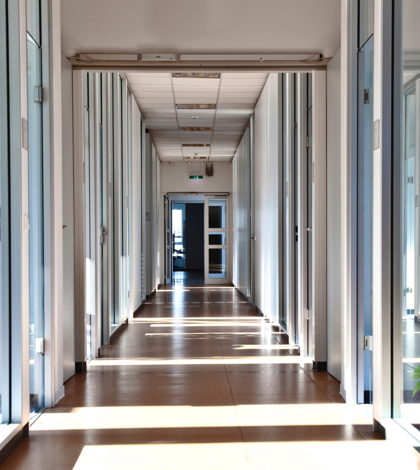Vacancy is declining and lease rates are holding steady, but speculative development probably won’t happen in 2016. Absorption will likely continue, and maybe even accelerate, if interest rates remain low.
While far from reaching a full recovery, the Inland Empire’s office market showed signs of life during 2015.
Its vacancy rate during the third quarter – 16.3 percent – represented a drop of 2.1 percent compared with the third quarter of 2014, a modest decline but still a move in the right direction, according to Colliers International.
Net absorption during the third quarter was 110,200 square feet, about twice the amount recorded one year earlier. Five of the Inland Empire’s eight submarkets experienced positive net absorption in their office markets during that time, with San Bernardino leading the pack at 71,200 square feet.
Class B office buildings recorded the most absorption – 100,200 square feet – during the third quarter.
Riverside, normally one of the Inland Empire’s strongest office markets, recorded negative absorption of 37,700 square feet.
Notable office transactions during the third quarter included the sale of a 74,655-square-foot building in Ontario to Northlight Capital Partners in Connecticut for $10.8 million, a 40,000 square foot building in Riverside that sold for $7.2 million to Santa Barbara-based DEH Airways II LLC and a 24,000 square foot lease deal in San Bernardino involving Molina Healthcare.
Financial details of that transaction were not released.
On the downside, construction fell to zero from the 58,000 square feet of office space that was being built in the Inland Empire during the third quarter of 2014.
Also, lease rates were flat: $1.69 per square foot, up three cents year-over-year. That continued a trend that began two years ago, with lease rates moving only two cents in either direction from quarter to quarter.
Maybe the most telling part of Colliers’ four-page report on the Inland office market’s performance during the third quarter of 2015 was the the two columns of zeroes regarding construction, for both completed projects and anything currently being built.
Unfortunately, that’s been the norm in Riverside and San Bernardino counties for the past five years or so, and that trend isn’t likely to change much in 2016, said Bob Caudill, regional director for Colliers
“We expect to see some improvement in the Inland office market next year, but I don’t think it will extend to any “spec’ development,” said Caudill, who oversees the data used in Colliers’ quarterly reports. “If that happens it will be somewhere else, maybe in Orange County.”
By improvement, Caudill means more positive net absorption and an increase in lease rates from their current level.
“Office lease rates are going up in all of the Southern California submarkets, so they should also go up in the Inland Empire.”
With a 16.3 percent vacancy rate and lease rates averaging about $1.70 per square foot, there’s little incentive for developers to build more office buildings. Better to let the vacancy rate drop, at least to under 10 percent and maybe a little lower, before developing anything new.
When office construction does start up again in the two-county region, developers would be wise to focus on buildings in the range of 40,000 square feet, a category that has all but disappeared from the local market, Caudill said.
“There are a lot of people out there looking for office buildings that size but they have no place to go, at least not in the Inland Empire,” Caudill said. “It’s all been taken off the market, both Class A and Class B, and it needs to be replaced.”
In the past, struggling office markets have been helped when the local housing market came back to life because so many businesses – mortgage, construction, insurance, title, etc. – are tied directly to the housing market and must lease extra office space when more houses are being built.
Homebuilders themselves need more office space when things get busy, but that probably won’t help much either whenever the Inland Empire housing market reaches full recovery, Caudill said.
“Some of the homebuilders got burned so bad in the recession that they’re being extremely cautious this time around,” Caudill said. “Some of them ended up leasing office space they were no longer using. They aren’t going to let that happen again.”
Rick Lazar, senior vice president with Coldwell Banker Commercial Sudweeks Group in Redlands, agreed that the Inland Empire office market will continue to improve next year, but said it’s probably several years away from a full recovery.
“We’re getting closer to 10 percent vacancy, which has been the goal all along, and once you get to that I think you will see some new development,” Lazar said. “But I don’t expect to see any speculative development next year. I’ve heard of a few plans, but I don’t expect to see any groundbreaking in 2016.”
Even though vacancy rates are currently above 16, Lazar believes they could reach 10 percent, or maybe even below that, by the end of next year.
“Everything is heading towards a decline in vacancy,” Lazar said. “All of the indicators point in that direction, and the lower interest rates might help because people will decide to buy or lease before they go up.”
Some of the Inland Empire’s higher-profile office properties – the Tri-City Corporate Centre in San Bernardino, for example – are either being upgraded or will be shortly, which is one sign that the Inland Empire office market is on the rebound, Lazar said.
Any decline in vacancy next year will be a combination of expansion and spillover from outside markets, specifically Los Angeles into Ontario-Rancho Cucamonga and Orange County-San Diego into Corona, Lazar said.
“It will move west to east, like it always does,” Lazar said. “That’s the natural progression in the office market. But any speculative development is more likely to happen in Orange County because they’re running out of space.”
 IE Business Daily Business news for the Inland Empire.
IE Business Daily Business news for the Inland Empire.


